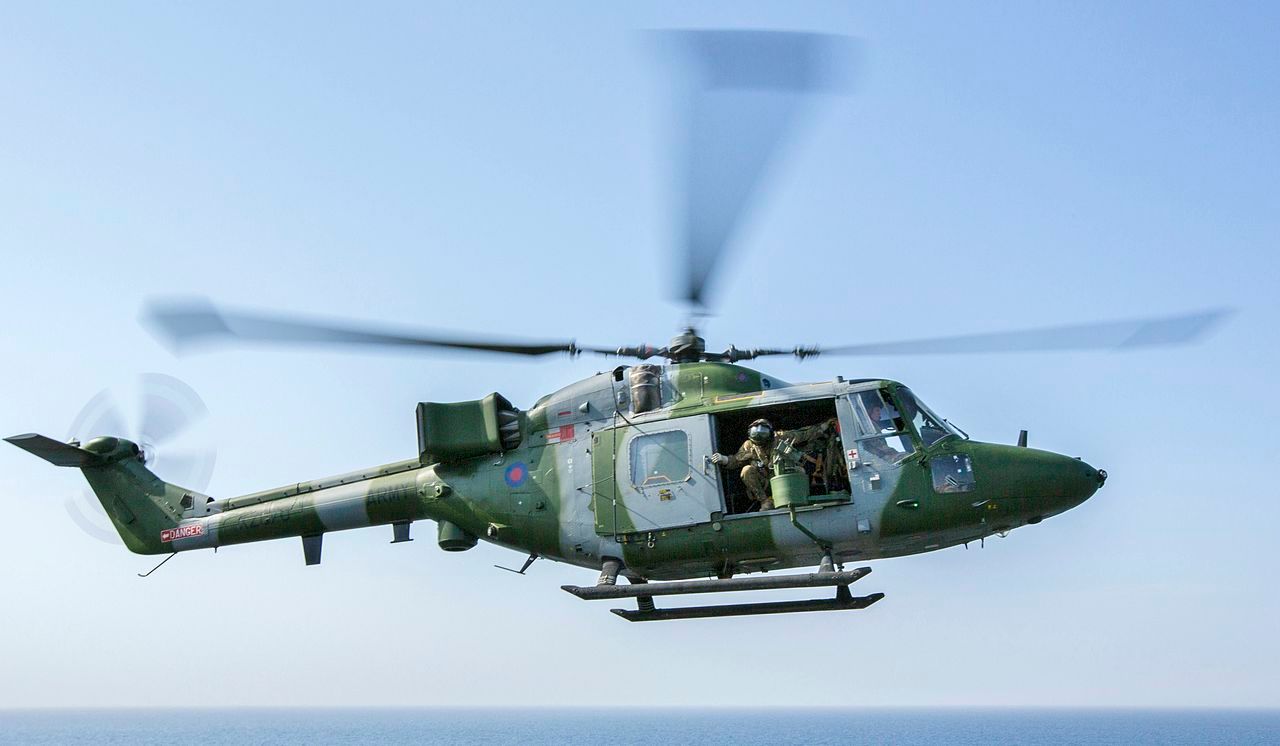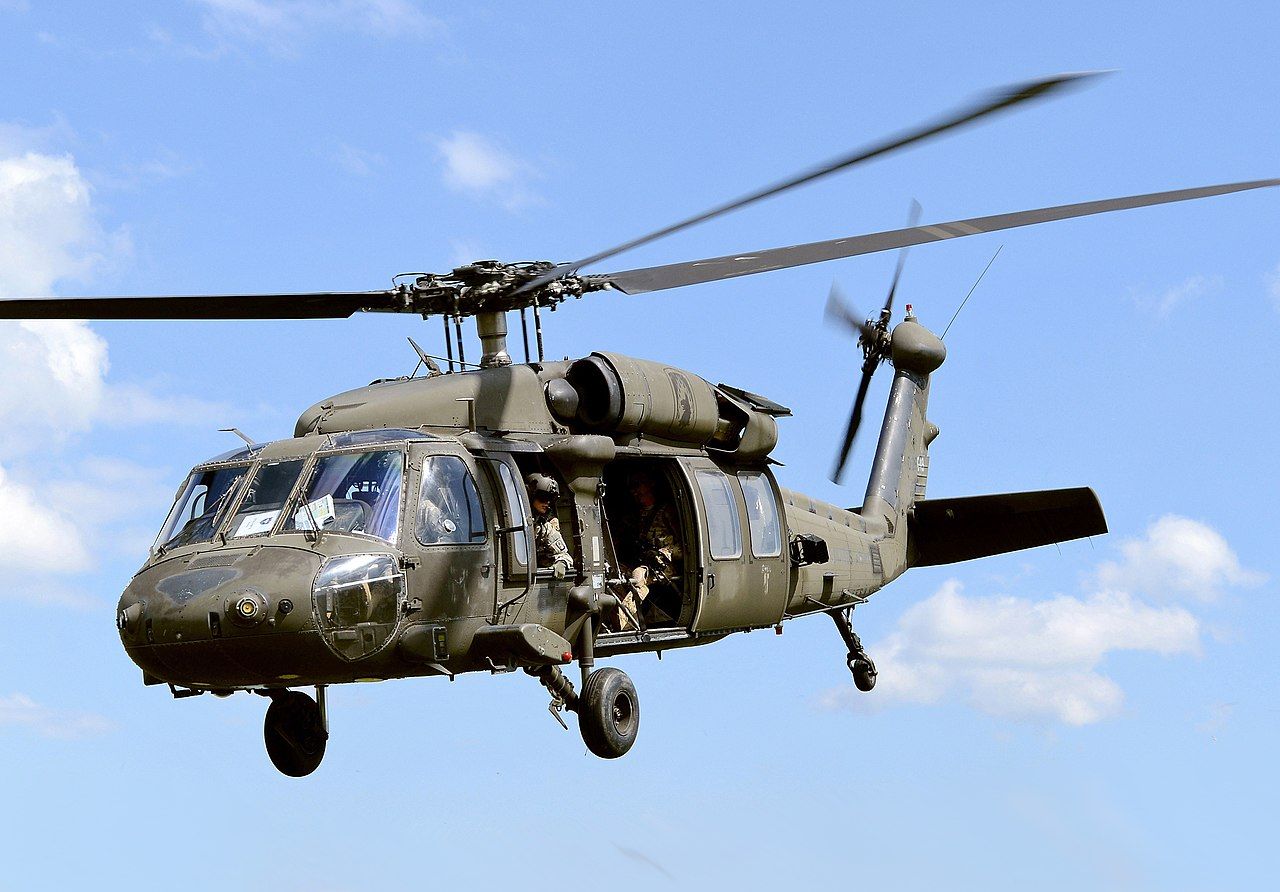In the vast expanse of the sky, where cutting-edge machines soar, a fierce rivalry has long captivated the aviation world. Two behemoths of the helicopter realm, the Westland Lynx and the Blackhawk, have danced an enchanting aerial tango, captivating both aviation enthusiasts and military strategists. The Westland Lynx, with its elegant British flair, and the Blackhawk, emanating the unmistakable presence of American power. As these magnificent machines dominate the skies in a thrilling duel, we embark on an exploration that will unveil the distinctive merits of each chopper, leaving us in awe of their prowess and engineering wonders. So, fasten your seat belts, dear readers, and prepare to venture into the enthralling realm of the Westland Lynx vs Blackhawk: a clash of titans from opposite sides of the Atlantic.
- Westland Lynx: Multi-role military helicopter designed by Westland Helicopters, reached a record-breaking speed of 249 mph, still in service with some countries.
- Sikorsky UH-60 Black Hawk: US Army’s primary medium-lift tactical helicopter, cruising speed of 175 mph and top speed of 183 mph, featured in Black Hawk Down.
- Boeing CH-47 Chinook: Tandem-rotor heavy-lift helicopter, American and British militaries’ go-to for troop and cargo transport, cruising speed of 184 mph, maximum speed of 196 mph.
Today we will look at the world’s five fastest helicopters in 2023, but before we get into that, let’s first look at how helicopters fly. Unlike fixed-wing aircraft that use wing or fuselage-mounted engines, helicopters use rotor blades to provide lift and propulsion.
Whereas a plane must constantly be moving forward to keep it in the air, thanks to its rotors, a helicopter can hover. On average most civilian helicopters can travel between 75 and 150 mph, while military helicopters can fly much faster at speeds of over 200 mph. Contributing factors to how fast a helicopter can fly are weather conditions, the helicopter’s weight, and the cargo’s weight.
While some may argue that the Bell Boeing V-22 Osprey is the fastest helicopter in the world, reaching speeds of around 316 mph, we will leave it off our list as it is more of a hybrid plane than a helicopter. The experimental Sikorsky X2, with its twin rotors and rear pusher propeller, is also worth mentioning, but because it never went into production, we will also eliminate it from our list.
Likewise, the EUROCOPTER X3 was extremely fast, reaching a top speed of 293 mph on June 7, 2013. Like the Sikorsky X2, the Airbus helicopter was an experimental one-off, so we do not include it on our list of the world’s top five fastest helicopters.
Westland Lynx
Designed and built by Westland Helicopters at its Yeovil factory in Somerset, the Westland Lynx is a multi-role twin-engine military helicopter. Initially created in partnership with Sud Aviation (later Aérospatiale), the Lynx was to be used by both the British and French military.
The Westland Lynx first flew on March 21, 1971. In 1986, a specially modified Lynx broke the world speed record for helicopters when it reached 249 mph. The Lynx remains in service with some countries military’s but was retired by the British and French by 2020.
Sikorsky UH-60 Black Hawk
The twin-engine four-blade Sikorsky UH-60 Black Hawk entered service with the US Army in 1979, replacing the Bell UH-1 Iroquois as the primary medium-lift tactical helicopter.
The Black Hawk has a cruising speed of 175 mph and a top speed of 183 mph. The helicopter was made famous in Ridley Scott’s movie Black Hawk Down and the aircraft used by special forces in 2011 when they entered Pakistan to kill Osama bin Laden.
1. Seeking Sky Supremacy: The Ultimate Showdown – Westland Lynx vs. Blackhawk
The battle for sky supremacy between the Westland Lynx and the Blackhawk has captivated aviation enthusiasts worldwide. These two iconic helicopters stand as symbols of power, precision, and technological marvel, each boasting unique qualities that set them apart. Let’s delve into the intricacies of this ultimate showdown and explore what makes these machines true marvels of engineering.
The Westland Lynx takes center stage with its sleek and streamlined design. This agile beauty is equipped with cutting-edge technology, offering unparalleled maneuverability and speed. The Lynx boasts an impressive array of features, including:
– **Advanced Airframe**: The Lynx’s lightweight composite airframe ensures superb performance in aerial combat situations.
– **Dual Turbine Engines**: These powerhouses provide exceptional thrust, enabling the Lynx to reach remarkable speeds and maneuver with ease.
– **Stellar Surveillance Capabilities**: Equipped with advanced surveillance systems, the Lynx is a force to be reckoned with in reconnaissance operations.
– **Versatile Weaponry**: Its weapon stations accommodate an array of missiles and torpedoes, transforming the Lynx into a formidable combat machine.
In the opposing corner, we have the legendary Blackhawk, renowned for its ruggedness and reliability. This workhorse has become synonymous with military missions and rescue operations worldwide. Here are some notable features that make the
2. When Rival Helicopters Take Flight: The Spectacular Battle – Westland Lynx vs. Blackhawk
Licensed manufacturing, Super Lynx, and Battlefield Lynx =
In September 1974, the British and Egyptian governments began talks to establish a new helicopter manufacturer in Egypt. Out of these discussions, the Arab British Helicopter Company (ABHCO) was formed in the 1970s. This new organization was accompanied by the first arrangements for licensed production of the Lynx AH.1 in Helwan, Egypt. Another contract has been formalized with Rolls-Royce to license the Lynx Gem engine at its Helwan facility. However, the plan was eventually abandoned due to lack of funding due to the collapse of the Arab Organization for Industrialization (AOI). Introduced in 1984, the Lynx 3 was an enhanced development featuring an extended fuselage and redesigned tail boom. , Gem 60-3/1 engine, wheeled tricycle chassis, BERP rotor blades, increased fuel capacity. Both Army and Navy variants were proposed. However, the project was closed in 1987 due to insufficient orders. Only one Army Lynx-3 prototype was built. A variant of the Lynx AH.7 with a Lynx-3 wheeled chassis was marketed by Westland as the Battlefield Lynx in the late 1980s. The prototype first flew in November 1989 and deliveries began in 1991. In the British Army, this variant is designated as Lynx AH.9. In the early 1990s, Westland incorporated some of the technology from the Navy’s Lynx-3 design into fewer aircraft. – Radical Super Lynx. It was equipped with BERP rotor blades, a Westland 30-derived tail rotor, Gem 42 engines, a new under-the-nose 360-degree radar installation, and an optional nose-mounted electro-optical sensor turret. The Royal Navy Lynx HAS.3 upgraded to the Super Lynx standard is in service as the Lynx HMA.8, and several export customers have ordered new or upgraded Super Lynxes. Since the 1990s Westland began offering the Super Lynx 200 with the LHTEC CTS800 engine and the Super Lynx 300 with a new cockpit and avionics derived from the AgustaWestland EH101. Both of these models have achieved some export sales. In 2002, Flight International reported that more than 40 variants of the Lynx were in service with various users, with approximately 400 aircraft being built for various customers.
= Future Lynx/Lynx Wildcat =
The British Army and Royal Navy Lynx fleets were to be replaced by a new common advanced Lynx variant based on the Super Lynx 300 with a new tail boom, chassis, cockpit, avionics and sensors. Originally called the Future Lynx and later the Lynx Wildcat, this type was later redesignated as the AW159 Wildcat. Although the lynx is the origin and basis of its design, the wildcat is very different. Only 5% of the components remain compatible with previous Lynx versions, including some main rotor gearbox parts and the fuel system.

